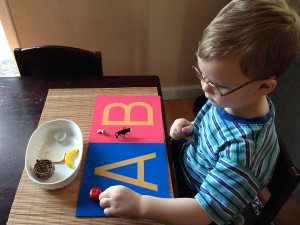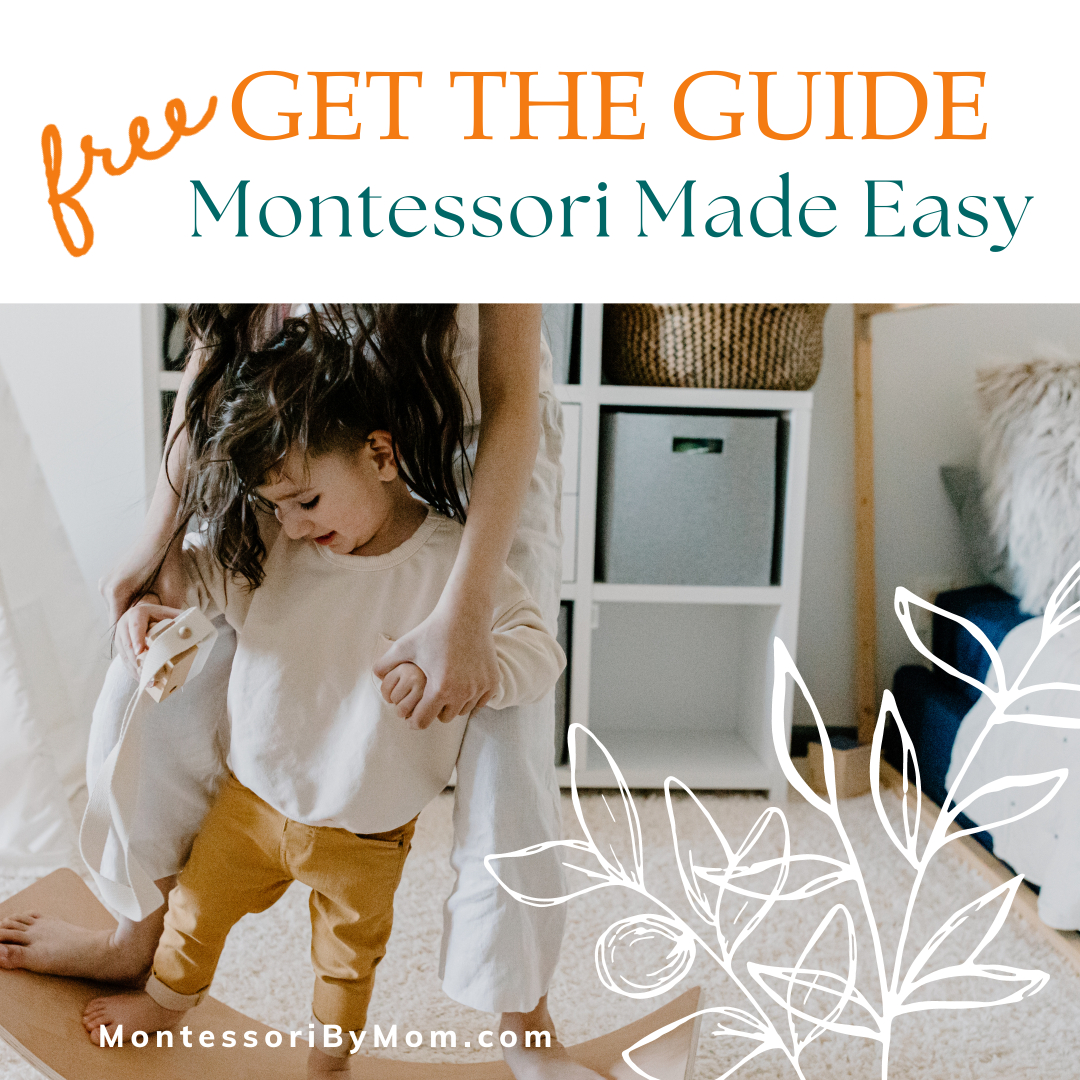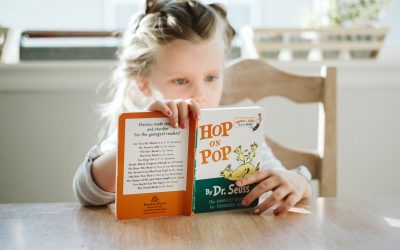Montessori Language Learning
It’s a quiet evening and you are snuggled up with your little one reading “Goodnight Moon” by Margaret Wise Brown. Your child is mesmerized by the pictures in the book and points at them as you read to him. For you, it’s just another cozy moment reading a bedtime story. To your child, it’s a whole world of language to uncover.
After all, language is how we communicate with each other. It’s the bridge between cultures and the very cornerstone of a civilized society. Young children intuitively know this, even before they utter their very first words. Like the process of osmosis, children constantly absorb new words to add to their language library. With Montessori language cards, children can assimilate vocabulary words in a hands-on approach. A language basket can bring those words to life.

Creating a Montessori Language Basket
Montessori language cards are best used for children between 18 months and 4 years, but you can begin integrating language lessons long before that. As your little one shows more curiosity in his surroundings, it’s an ideal time to start pointing to objects and naming them. When your child begins to learn practical life skills, be sure to keep naming objects throughout the day. For instance, name objects as you work together to sort laundry, dust the shelves, and make lunch.
 When you are at the grocery store, point out the apples, pears, bananas, and so on. To cement his learning, Montessori language baskets are an excellent solution to help carry on the conversation at home. Montessori language baskets are baskets you prepare for your child with a few real-life items or replicas. As your child explores the items, you can introduce vocabulary about the object and its characteristics.
When you are at the grocery store, point out the apples, pears, bananas, and so on. To cement his learning, Montessori language baskets are an excellent solution to help carry on the conversation at home. Montessori language baskets are baskets you prepare for your child with a few real-life items or replicas. As your child explores the items, you can introduce vocabulary about the object and its characteristics.
Start by keeping it simple. You can add a few pieces of fruit, either real or made of fabric or wood, to a basket. In keeping with the theme, you can also add a little book with pictures of fruit. Language baskets are a great way to use Montessori language minis.
With verbal children, Montessori language baskets are a good opportunity to begin using the three-period lesson.
In Montessori, a three-period lesson is a three-step method used to introduce vocabulary. The three steps are naming, recognition, and recall.
- First, you name the object.
- Next, you ask your child to show you the object that you name.
- Finally, you show the object to your child and ask them its name.
In the three-period lesson, you should only ask your child a question if you are confident they know the answer.
As your child develops their concentration skills and better grasps object recognition, you can introduce Montessori language cards.
How to Introduce Montessori Language Cards
Montessori language cards are vocabulary cards with simple, realistic images depicted on them. When you feel like your child is ready to progress to these cards, you can start with a matching game. Start by adding three to four cards with identical matching objects.
Make sure that the cards match the object they represent as closely as possible. If you can’t find a card that matches a specific object, you can always take a picture of it instead of using an actual Montessori language card. The better your child gets at mastering the matching game, the more language cards and objects you can add to the mix.

For older children who are working on reading and writing, you can also include sandpaper letters or movable alphabet letters in the basket to help with letter recognition. For example, if you have a toy apple and a language card with an apple on it, you can also add the letter A from your sandpaper letters. Then you can have a banana, a matching language card, and the letter B in the basket so that your child can group the different letters with their matching counterparts. You can have three or four matching alphabet groups for them to put together.
How Language Baskets Can Grow With Your Child
 Montessori language cards take the language baskets to a new level by turning an abstract concept (like an image on a card) into something concrete that your child can work with. When you are first starting, it’s best to keep the objects relevant. Make sure your baskets are filled with items that make sense to your child or represent something in his environment. For instance, start with replicas of animals that he has actually seen in his surroundings. Ducks, dogs, cows, and cats are all great animals to start with. Zebras, giraffes, and rhinoceroses may be appropriate if your child has seen them at the zoo.
Montessori language cards take the language baskets to a new level by turning an abstract concept (like an image on a card) into something concrete that your child can work with. When you are first starting, it’s best to keep the objects relevant. Make sure your baskets are filled with items that make sense to your child or represent something in his environment. For instance, start with replicas of animals that he has actually seen in his surroundings. Ducks, dogs, cows, and cats are all great animals to start with. Zebras, giraffes, and rhinoceroses may be appropriate if your child has seen them at the zoo.
Save the more exotic species for when your child is older and can first recognize and name the animals they are familiar with. You can then scaffold their learning by introducing lemurs, for example, in a basket with other African animals. As they expand their language, they may enjoy playing the matching game with animals in other parts of the world.
The Benefits of Montessori Language Cards and Baskets
Montessori language baskets inspire the kind of play based on the principle of freedom within limits, which is the ability to be creative with defined boundaries. This gives the child enough security to feel independent and enough flexibility to engage their imagination. Language baskets also inspire Heuristic play, which is open-ended, sensory play that allows a child to explore various everyday objects.
Final Tips
As with most anything in Montessori, less is more. Avoid overdoing your baskets, as you don’t want to overwhelm your child. Five to eight items are a good starting point. It’s also important to use natural materials when possible. Young children love the texture of wood, fabric, and metal, and natural materials teach children about the real weight, density, and texture of an item. To keep your baskets fresh and exciting, only take them out at certain times of the day. Be sure to rotate them and bring in new themes from time to time to keep your child from losing interest.
Language builds the foundation of education. Language skills can help children better communicate their needs, connect with those around them, and learn about the world. Montessori language cards and baskets are just a handful of tools that can empower your child with the gift of language. The Montessori By Mom Learning Language Toolbox is a great resource for even more Montessori language materials.




0 Comments